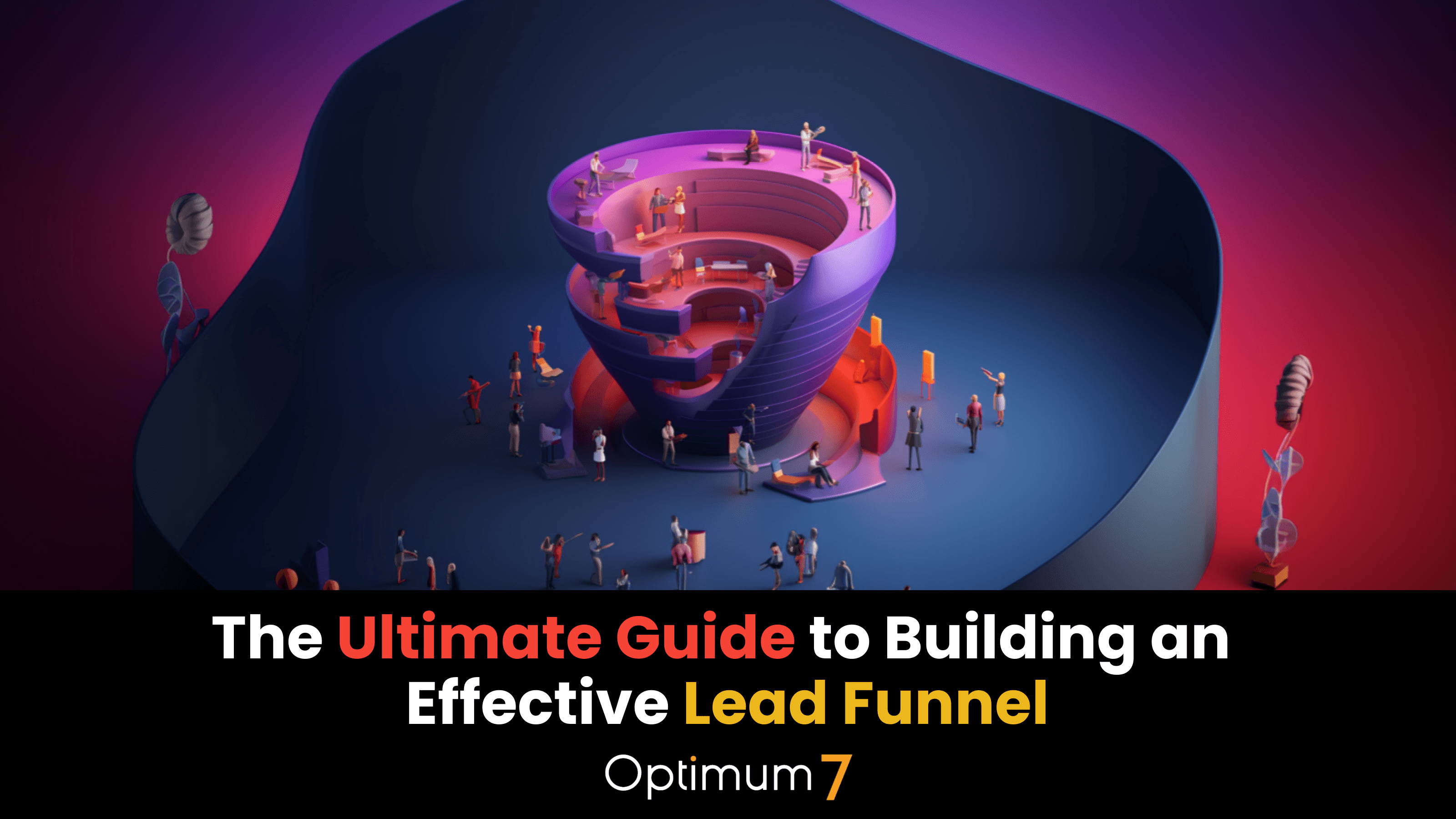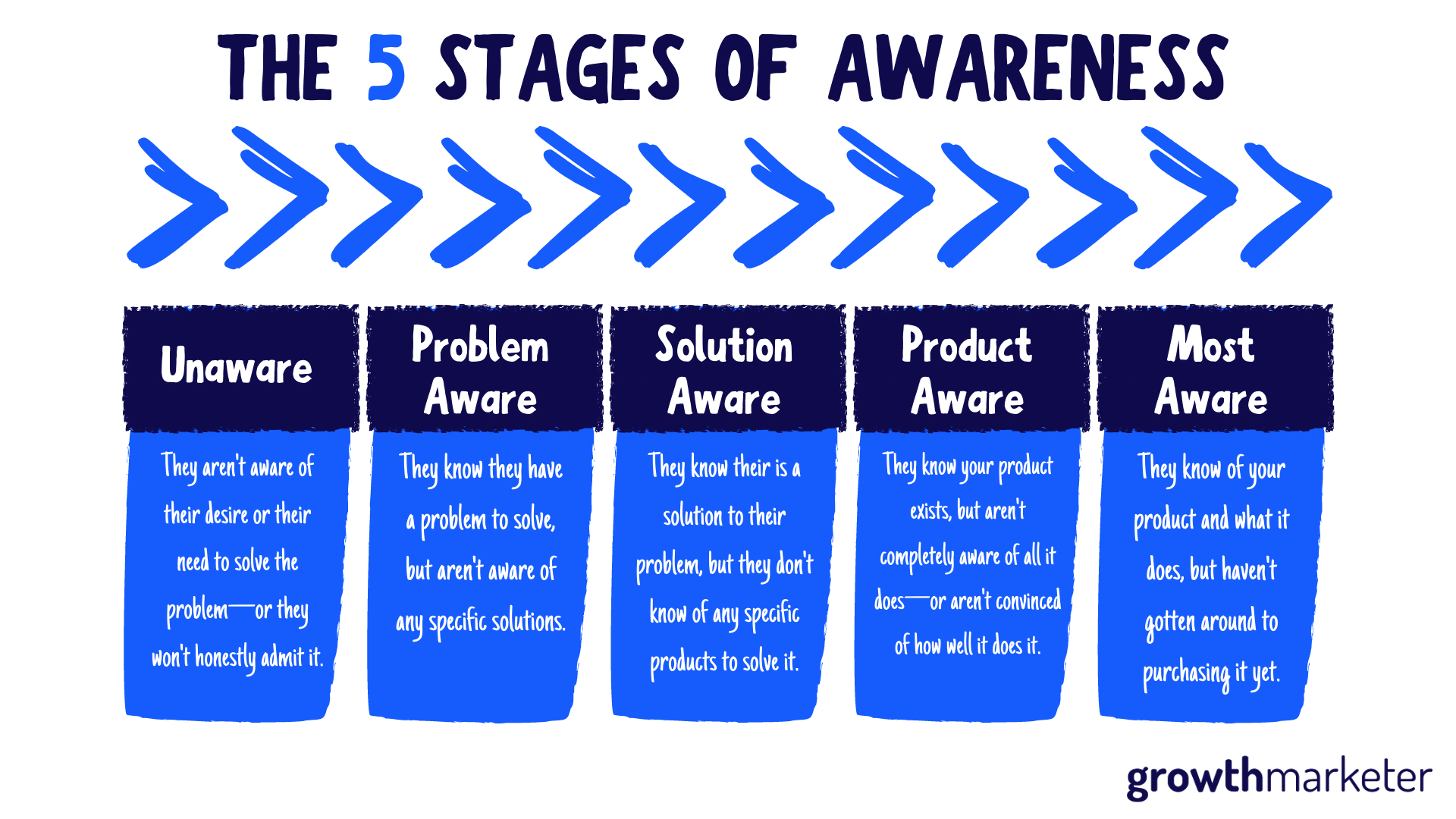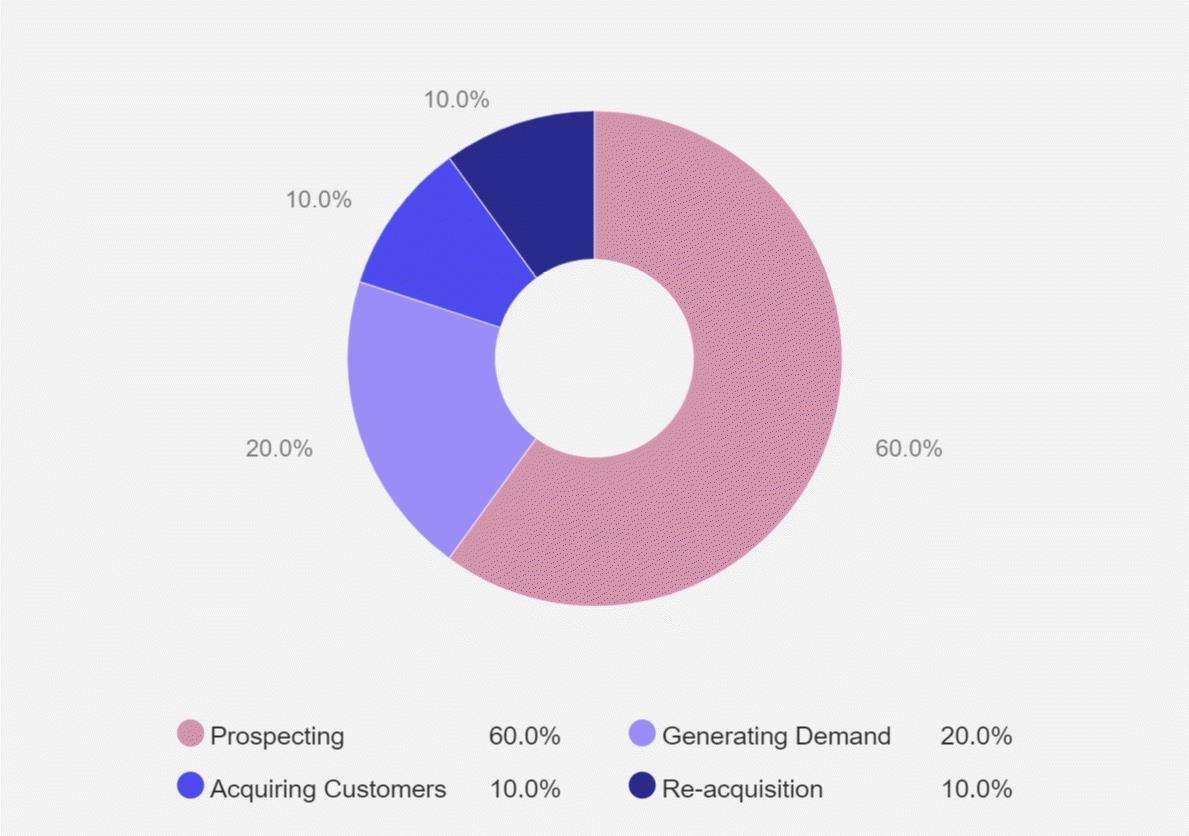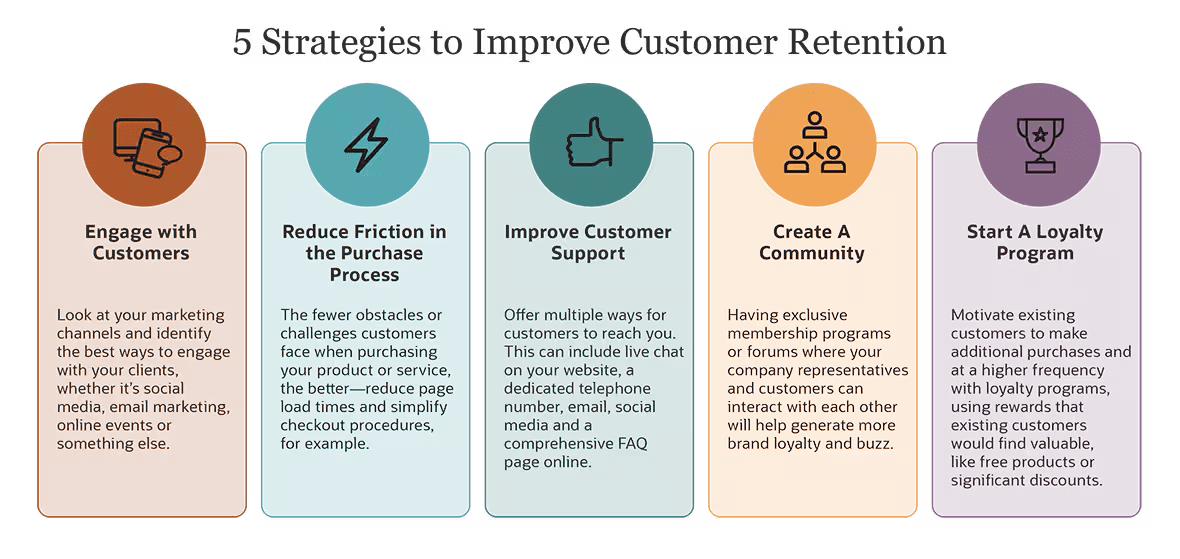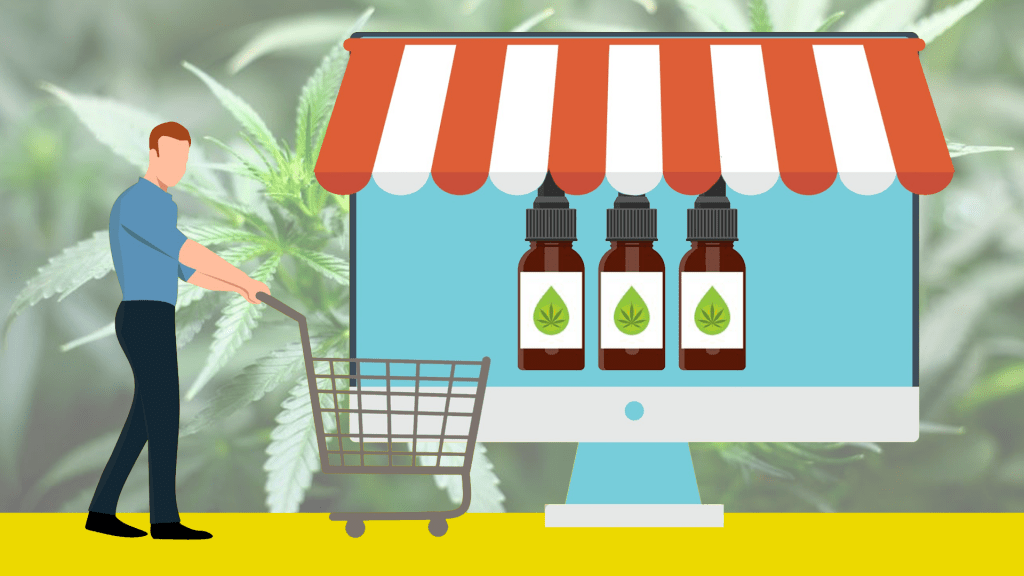As we are through the first half of 2023 one term has become increasingly prominent among successful businesses: the Lead Funnel. It might sound like just another buzzword, but it’s the roadmap that guides potential buyers from mere awareness to the final purchase.
But what exactly is a Lead Funnel? Imagine this: a physical funnel has a wide top and a narrow bottom. Pour a liquid into the funnel, and it guides the flow seamlessly from the expansive top to the focused bottom. Similarly, in any setting, this funnel represents the journey of a vast audience pool and how they’re methodically channeled towards making a decision, ideally leading to a purchase.
Let’s break this down with a relatable example. Consider online shoe stores. Jane, an avid runner, realizes her running shoes are worn out. She starts her online search for ‘best running shoes.’ At this moment, she’s at the topmost part of the funnel, the broadest segment. As she refines her search, maybe looks up reviews, compares brands, and hones in on specific types, she moves further down the funnel. By the time she’s looking at particular products, reading customer reviews, and even adding a pair to her cart, she’s nearing the bottom of the funnel. And when she finally makes that purchase? That’s the narrowest part, the culmination of her journey.
So, why does this funnel model work so effectively? Three primary reasons:
- Clarity and Focus: The funnel provides a structured roadmap. Businesses can identify at which stage a potential buyer is and tailor their marketing strategies accordingly. In Jane’s case, early on, a general advertisement about the latest running shoes might catch her eye. As she progresses, detailed reviews or testimonials might influence her.
- Efficient Resource Utilization: By understanding where a customer is in the funnel, businesses can allocate resources more effectively. For instance, someone at the top might just need broad information and awareness campaigns, while someone at the bottom might be swayed by a timely discount or a limited-time offer.
- Data-Driven Insights: The funnel allows businesses to track metrics and understand drop-offs. If many Janes add shoes to their carts but don’t purchase, there’s a clear indication that something at that stage needs reevaluation. Perhaps it’s the checkout process, or maybe it’s the shipping cost.
In essence, a Lead Funnel is not just a theoretical model; it’s a practical, actionable tool that, when utilized correctly, can significantly boost conversions and drive sales in the digital marketplace.
Understanding the Stages of Consumer Awareness
Every potential customer embarks on a unique journey when deciding whether or not to make a purchase. However, these journeys share common milestones, which marketers have termed the ‘stages of consumer awareness.’ Recognizing and understanding these stages isn’t just an academic exercise; it’s the key to effective, targeted marketing.
– Unaware: Picture a fisherman casting a wide net into the sea, attempting to catch as many fish as possible. The ‘Unaware’ stage is somewhat similar. At this point, potential customers aren’t even conscious of a problem they have. For instance, consider Alex, who has been using wired headphones for years. He isn’t even considering a change because he’s unaware of the conveniences of wireless technology.
Marketing at this stage is all about broad awareness. Brands might sponsor content on unrelated topics, invest in banner ads on popular sites, or even engage in influencer partnerships just to get the word out.
– Problem Aware: Now, Alex’s wired headphones start tangling frequently, and he recognizes it’s an annoyance. He’s aware of a problem but doesn’t know about potential solutions. Marketing strategies for this stage involve identifying pain points and empathizing with them. Ads showcasing ‘tangle-free listening’ or content about ‘common headphone issues’ would appeal to Alex now.
– Solution Aware: As Alex delves deeper, he discovers the world of wireless headphones. He’s enlightened about a potential solution but hasn’t committed to a specific product. This stage is ripe for educational content, comparison charts, and benefits-driven campaigns. For example, a video showcasing the ease of using wireless headphones during a workout or while commuting would resonate with him.
– Product Aware: After some research, Alex zeroes in on a couple of brands or products. He’s on the brink of making a decision. Here, businesses should focus on differentiating themselves from competitors. Detailed product demos, testimonials, and feature-driven content can tip the scales. For instance, if one brand offers a significantly longer battery life, it would be wise to highlight this advantage prominently.
– Most Aware: This is the moment of truth. Alex knows which wireless headphones he wants. He trusts the brand and is nearly ready to hit the ‘buy’ button. However, he might be waiting for that final push – perhaps a limited-time discount, free shipping, or an additional accessory. Targeted email campaigns, flash sales, or even retargeting ads can be the nudge he needs to complete the purchase.
It’s crucial to understand that while these stages are linear, not every customer will move through them at the same pace, and some might even skip stages altogether. Recognizing where a customer is on this spectrum and tailoring strategies accordingly is the essence of an effective marketing campaign.
The Essence of Advanced Lead Funnels
The digital landscape is saturated with businesses clamoring for attention, trying to convert every visitor into a sale. However, savvy businesses recognize that not every visitor is ready to make a purchase immediately. This is where the magic of advanced lead funnels comes into play.
Imagine the process of buying a car. Very few people walk into a dealership without any prior research and purchase a vehicle on the spot. Instead, they take test drives, read reviews, compare models, and ponder their options. This ‘warm-up’ phase is the essence of advanced lead funnels.
Definition and Importance of Advanced Lead Funnels:
An advanced lead funnel is a strategic process of nurturing potential customers through various stages of their buying journey, providing them with the right information and engagement at the right time. Think of it as a series of conversations. You wouldn’t propose marriage on the first date, right? Similarly, trying to sell immediately might not always be the best approach.
For example, let’s consider Sarah, who stumbles upon an ad for a new skincare product. She’s intrigued but not ready to purchase. An advanced lead funnel might first offer her a free sample or an informative eBook on skincare routines. Once she’s engaged, the funnel might then introduce her to testimonial videos, followed by an invitation to a webinar or a Q&A session. Each of these steps is building trust, educating her, and moving her closer to a purchase decision.
The Concept of Nurturing Leads Rather than Immediate Conversion:
The power of patience cannot be underestimated. Nurturing leads is akin to planting seeds. Not all will sprout, but with proper care, many will flourish.
Consider a company selling high-end cameras. A visitor, let’s call him Mark, might be an amateur photographer just exploring his options. An immediate sales pitch might overwhelm or even deter him. Instead, through a lead funnel, Mark could first receive a beginner’s guide to photography, then maybe a comparison of entry-level cameras, followed by a demo video, and perhaps even a discount for a photography workshop. By the time he’s presented with a sales pitch, he’s well-informed, trusts the brand, and is much more likely to convert.
To sum it up, advanced lead funnels prioritize the journey over the destination. It’s about understanding that customers have different needs, questions, and apprehensions at various stages of their journey. By addressing these proactively and strategically, businesses can create a more personalized shopping experience, fostering trust and loyalty. The next sections will delve deeper into the tangible benefits of this approach and how it can revolutionize your lead generation strategy.
The Financial Advantages of Advanced Lead Funnel Strategy
In today’s fast-paced digital economy, it’s tempting for businesses to chase immediate returns. However, when it comes to marketing, sometimes playing the long game pays off in more substantial, sustainable dividends. Advanced lead funnel strategies are a testament to this approach. Let’s dive deeper into its financial advantages.
Cost-effectiveness of Nurturing Leads Compared to Direct Conversions:
It’s a common misconception that pushing for a sale at the first interaction is the most cost-effective approach. While it might yield a quick return, it can often result in higher long-term costs. Immediate sale strategies might involve aggressive advertising, frequent discounting, and high expenditure on attracting new traffic – all of which can significantly eat into profit margins.
On the other hand, nurturing leads can be more wallet-friendly in the long run. For instance, consider an online store specializing in artisanal coffee. If their strategy is to immediately sell premium coffee beans to every visitor, they might end up spending lavishly on ads. However, by using a lead funnel approach, they might first offer educational content on the art of brewing or the journey of a coffee bean. This content, once created, can be reused multiple times at minimal cost, gently guiding users towards a purchase over time.
Reducing the Customer Acquisition Cost through Nurturing:
Customer Acquisition Cost (CAC) is a critical metric for any business. It signifies the cost involved in acquiring a new customer. A mistake many businesses make is investing heavily in one-time campaigns or ads, which might bring a surge in traffic but don’t guarantee conversions. These tactics can inflate CAC.
Nurturing leads, however, often reduces CAC. By building a relationship with potential customers, businesses can often convert leads at a fraction of the cost. Take, for example, a software-as-a-service (SaaS) company. Instead of pushing for immediate subscriptions, they offer a free trial. Post-trial, they engage users with tutorials, webinars, and case studies. Over time, many of these leads become paying customers, and since the majority of engagement tools (like webinars and tutorials) are reusable, the CAC diminishes with each new conversion.
ROI and the Long-Term Perspective:
The Return on Investment (ROI) is significantly higher with lead nurturing. It’s not just about converting sales; it’s about cultivating loyal customers. Think about Lucy, who’s looking for sustainable fashion. She’s bombarded with ads from various brands, but one particular brand stands out. Instead of pushing sales, they first introduced her to their ethical sourcing process through a series of informative emails. Intrigued, Lucy then gets access to a behind-the-scenes video of their production. By the time she’s ready to buy, not only does she purchase more than initially intended, but she also becomes a brand advocate, referring friends and leaving positive reviews.
In the grand scheme of things, an advanced lead funnel strategy isn’t JUST about optimizing costs; it’s about building a sustainable, customer-centric business model. It promotes trust, loyalty, and positive word-of-mouth, all of which are invaluable assets in the competitive world of business. As we delve deeper into the nuances of a lead funnel strategy in the following sections, it becomes evident that understanding and capitalizing on the customer journey is the linchpin of success.
The Common Misallocation of Marketing Budgets
The allocation of marketing budgets can make or break a business. In the age of digital marketing, where numerous channels and platforms vie for advertisers’ attention, it’s easy to be lured by the newest trend or the biggest platform. However, this often leads to misallocation, where budgets aren’t necessarily directed towards the most effective channels for a particular business or stage of consumer awareness.
The Disparity Between Budget Allocation for the Most Aware and Unaware Audiences:
It’s natural to assume that targeting the ‘most aware’ audience segment, those who already recognize your product and its value, would yield the best returns. This leads many businesses to disproportionally allocate a significant chunk of their budget to retargeting campaigns or loyalty programs. While these are indeed essential, ignoring or underfunding campaigns for the ‘unaware’ segment can be a strategic misstep.
Imagine a brand-new online fitness platform. While they might be tempted to heavily invest in retargeting ads for visitors who explored their site but didn’t subscribe, it’s equally crucial to introduce their platform to potential users unfamiliar with their services. A balanced budget allocation might involve content marketing, like blog posts on fitness tips or YouTube workout videos, targeting those unaware of their platform’s existence.
The Pitfalls of Spending on the Wrong Audience and the Wrong Stage of Awareness:
Every audience segment requires a tailored approach. Marketing strategies suitable for those at the ‘product aware’ stage might not resonate with those at the ‘problem aware’ stage. Misdirecting funds can not only result in low ROI but can also confuse or alienate potential customers.
For instance, consider a tech startup offering a cutting-edge home automation system. If they funnel most of their budget into detailed tech-spec ads (suitable for a ‘product aware’ audience) and showcase them to an ‘unaware’ audience, they risk overwhelming or confusing potential customers. A more effective strategy would involve awareness campaigns highlighting the convenience and security of home automation for the ‘unaware’ segment, and detailed spec comparisons for the ‘product aware’ group.
Aligning Budgets with Business Objectives:
A critical aspect of budget allocation is ensuring alignment with business goals. If a company’s primary objective for the quarter is brand awareness, then focusing budgets on top-of-the-funnel activities targeting the ‘unaware’ and ‘problem aware’ stages makes sense. However, if the objective is to boost sales, then mid to bottom-of-the-funnel activities targeting the ‘solution’, ‘product’, and ‘most aware’ stages should be prioritized.
For example, a budding artisanal tea brand aiming to increase awareness might host tea-tasting events or partner with influencers for unboxing sessions. In contrast, a well-established brand aiming to boost sales might focus on loyalty programs, limited-time offers, or upselling techniques.
While it’s tempting to follow industry trends or competitor strategies, it’s imperative for businesses to assess their unique needs, objectives, and audience segments. This ensures that every marketing dollar is spent wisely, yielding maximum impact. As we proceed, we’ll delve into real-life success stories that have artfully navigated the complexities of budget allocation.
A Real-life Success Story: Optimum 7
While theories and strategies abound, sometimes it’s the real-world success stories that truly drive a point home. Such stories not only provide actionable insights but also inspire and motivate businesses to adopt best practices. One such inspiring tale in the realm of Lead Funnels is that of Optimum 7.
Working with a B2B Sales Client in the Machinery Industry:
The machinery industry, especially in the B2B sector, is complex. Unlike the instant gratification associated with B2C sectors like fashion or food, machinery sales involve extended decision-making processes, multiple stakeholders, and substantial investments. This makes the lead nurturing journey inherently prolonged and intricate.
Optimum 7 took on a client from this sector, facing challenges typical of the industry: long sales cycles, high customer acquisition costs, and difficulty in breaking through the noise in a saturated market.
Techniques and Lead Magnets Used:
Checklists: Recognizing the multifaceted nature of machinery purchases, Optimum 7 developed comprehensive checklists. These checklists, available for download, assisted potential buyers in understanding what they should look for in machinery, maintenance timelines, and even financing options. This tool, simple yet effective, positioned the client as a knowledgeable and trustworthy industry leader.
Webinar Recordings: To further deepen the trust and showcase the client’s expertise, a series of webinars were organized. These webinars covered topics from machinery maintenance to industry trends. Once recorded, they served as evergreen content, continually drawing in and educating leads.
Product Guides: Machinery, with its technical specifications and varied applications, can be daunting to even seasoned industry professionals. By providing detailed product guides, complete with visuals, use cases, and FAQs, Optimum 7 managed to demystify the products, making them more accessible and attractive to potential buyers.
Transformational Results in Cost per Acquisition and Conversion Rates:
The results of these efforts were nothing short of remarkable. The client experienced:
- A 40% reduction in customer acquisition cost. With effective lead magnets drawing potential buyers in and nurturing them organically, the need for aggressive paid advertising diminished.
- An increase in conversion rates by 25%. The curated lead nurturing journey, tailored to the unique needs of machinery buyers, resonated deeply, translating to higher sales.
- Higher Lifetime Customer Value (LCV). With the foundation of trust and expertise laid during the lead nurturing process, customers were not only more likely to make a purchase but also to return for future needs and even refer others.
Optimum 7’s success story with the B2B machinery client illustrates the profound impact of a well-executed lead funnel strategy. It underscores the significance of understanding your audience’s unique needs and building a journey that resonates, educates, and nurtures. As we move forward, we’ll uncover the underlying principles that made this strategy so successful and how businesses across sectors can adopt them.
What makes a Lead Funnel so Successful?
Lead funnels aren’t just about guiding potential customers through stages of awareness; they’re an art form that intertwines psychology, strategy, and execution. When done right, they go beyond mere sales to create brand advocates and lasting business relationships. So, what are the secrets behind successful lead funnels like that of Optimum 7? Let’s delve into the nuances.
Emphasis on Relationship Building:
In the digital age, where users are bombarded with countless advertisements, it’s the genuine relationships that stand out. Successful businesses understand that transactions are fleeting, but relationships endure.
Example: Think about a local artisanal bakery. Instead of merely advertising their fresh bread, they send out weekly newsletters sharing behind-the-scenes baking processes, stories of sourcing organic ingredients and even featuring loyal customers. Such gestures make patrons feel valued and part of a community, deepening their bond with the bakery.
Guiding Potential Customers on a Journey:
A lead funnel isn’t a sprint; it’s a marathon. Potential customers need guidance, information, and assurance at every stage. By providing value throughout this journey, businesses can build trust, setting the stage for a more substantial commitment from the lead.
Example: A software company doesn’t merely highlight its product’s features. Instead, they offer webinars on industry challenges, free templates relevant to their software’s functions, and case studies showing how their software made a difference. By the time the potential client is introduced to the software’s pricing, they’re already convinced of its value.
Positioning as Thought Leaders:
Another pivotal aspect is establishing authority in your domain. Leads are more likely to engage with and trust businesses they consider industry leaders or experts.
Example: A digital marketing agency doesn’t just offer services. They publish in-depth articles on marketing trends, share their research, and even provide free marketing tools. Such initiatives position them as thought leaders, making businesses more inclined to seek their services.
The magic of lead funnels lies in their ability to connect, engage, and inspire trust. It’s about recognizing that behind every click, view, or download, there’s a person seeking value. By understanding and catering to this fundamental human desire, businesses can transform leads into loyal customers and brand ambassadors. As we venture further, we’ll explore what lies beyond the initial purchase and how businesses can continue to offer value.
The Aftermath: Beyond the Purchase
While the culmination of the lead funnel typically results in a sale, the journey shouldn’t end there. The post-purchase phase is equally vital, often overlooked, yet brimming with opportunities. Engaging customers beyond the sale can foster loyalty, create brand advocates, and even spark additional sales. Let’s explore the dynamics of this phase and how businesses can harness its potential.
Turning Customers into Brand Advocates:
It’s said that a satisfied customer will tell three friends about their positive experience, while a dissatisfied one will tell ten. With social media amplifying these numbers, turning satisfied customers into vocal brand advocates can be a game-changer.
Example: Consider a sustainable footwear brand. Post-purchase, they encourage customers to share their unboxing experiences on social media, offering a chance to be featured on the brand’s official page. Such initiatives not only provide customers with a platform but also generate organic content and testimonials for the brand, fostering a sense of community and trust among potential buyers.
The Power of a Loyal Customer Base:
A loyal customer base isn’t just about repeat sales. It’s about creating a community that believes in, supports, and even defends a brand. Cultivating such loyalty goes beyond product quality; it’s about consistent engagement and value addition.
Example: A subscription-based coffee brand doesn’t stop at delivering premium beans to its subscribers. They organize monthly virtual coffee-tasting events, send out newsletters with brewing tips, and even surprise loyal subscribers with occasional complimentary products. Such gestures reinforce the brand’s commitment to its community, ensuring subscribers stay engaged and loyal.
Personalized Post-purchase Follow-ups:
With advancements in data analytics, businesses can now offer personalized post-purchase experiences. Whether it’s product recommendations based on past purchases or tailored offers for special occasions, personalized interactions can significantly enhance the customer’s affinity towards a brand.
Example: An online bookstore, post-purchase, sends personalized reading recommendations based on a customer’s past choices. On the customer’s birthday, they offer a curated list of books with a special discount. Such gestures make the customer feel valued, increasing the likelihood of repeat purchases.
Encouraging Feedback and Continuous Improvement:
A pivotal aspect of post-purchase engagement is seeking and acting on feedback. It shows customers that a brand values their opinion, and it’s also an invaluable tool for continuous improvement.
Example: A tech gadget company, after launching a new product, sends out feedback forms to its buyers. They not only incentivize this feedback with discount vouchers but also regularly update customers about how their feedback led to tangible product improvements. Such transparency fosters trust and portrays the brand as genuinely customer-centric.
In a nutshell, while the sale might signify the culmination of the lead funnel, the relationship-building journey has just begun. By engaging, valuing, and consistently delivering to customers beyond the purchase, businesses can foster lasting relationships that transcend transactions. Up next, we’ll delve into how brands can harness innovative channels to make their marketing endeavors more cost-effective and impactful.
A Cost-effective Marketing Future
The realm of marketing is dynamic, continually evolving, and responding to shifts in technology, culture, and consumer behavior. As traditional ad platforms like AdWords, Facebook, and Instagram become increasingly saturated and costly, businesses are exploring alternative avenues to engage their audiences without burning a hole in their pockets. In this section, we’ll delve into these emerging channels and their potential to reshape the marketing landscape.
The Benefits of Avoiding Traditional Ad Platforms:
Traditional platforms, while potent, come with challenges. The increasing ad blindness among consumers, coupled with high competition driving up ad costs, has forced businesses to think outside the box.
Example: Imagine a local organic skincare brand. Instead of pouring money into Facebook ads, they collaborate with micro-influencers for genuine product reviews. This strategy not only costs less but also yields authentic engagement, tapping into the influencer’s loyal audience base.
Utilizing Email – The Evergreen Channel:
Despite being one of the oldest digital marketing channels, email remains remarkably effective. Its power lies in its directness and personalization capabilities.
Example: A gourmet cookie store, post-purchase, sends its customers personalized thank-you emails. A month later, these customers receive curated recipes featuring the cookies they bought. Such targeted content not only keeps the brand at the top of the customer’s mind but also offers value, fostering loyalty.
SMS – The Underutilized Powerhouse:
While often overlooked, SMS marketing offers an impressive open rate, often exceeding 90%. With consumers almost always having their phones at arm’s length, it’s a direct and immediate channel.
Example: A fitness apparel brand sends SMS alerts to its customers about flash sales, limited-edition launches, or restocks of popular items. The immediacy of SMS ensures timely information delivery, driving quick action from eager customers.
Voicemail Drop Nurtures – The Personal Touch:
A relatively novel strategy, voicemail drops add a personal touch to marketing endeavors. By bypassing the need for a live call, businesses can convey their messages without being intrusive.
Example: An online course platform uses voicemail drop nurtures to update its students about upcoming modules, guest lectures, or any changes in the course schedule. Hearing the instructor’s voice adds a personal touch, enhancing the connection between the student and the platform.
Harnessing Niche Platforms and Communities:
Beyond mainstream platforms, niche communities like Reddit, Quora, or industry-specific forums offer opportunities to engage with a hyper-targeted audience genuinely interested in specific subjects.
Example: A tech startup focusing on home automation engages in discussions on niche forums dedicated to smart homes. By offering genuine advice, sharing insights, and addressing concerns, the startup establishes authority and trust within the community, organically attracting potential customers.
As the marketing landscape continues to evolve, the key lies in adaptability and innovation. By leveraging alternative channels and strategies, businesses can not only save on exorbitant advertising costs but also engage their audiences in more genuine and impactful ways. As we conclude our guide, we’ll emphasize the importance of staying ahead of the curve and seizing the immense opportunities that innovative marketing strategies present.
Conclusion: Seize Your Showtime
As we draw the curtain on our exploration of building an effective lead funnel, it’s essential to look forward with optimism and foresight. In an increasingly competitive digital landscape, the mantra for success isn’t merely about adoption but about innovation, refinement, and iteration.
Evolution is Key:
The journey of perfecting a lead funnel is ongoing. As consumer behavior evolves, so must the strategies that engage them. Businesses must remain agile, ready to tweak their approaches based on insights, feedback, and emerging trends.
A decade ago, Flash sales were the buzzword. Brands saw massive traffic and conversions using this strategy. Today, with consumers seeking more authentic and sustained engagement, story-driven content, interactive experiences, and community-building initiatives are gaining traction.
Leverage Data, but Don’t Neglect Intuition:
In an age of big data and analytics, informed decision-making is vital. However, it’s equally important not to lose sight of human intuition and creativity. Sometimes, most breakthrough campaigns stem from out-of-the-box thinking, not just numbers.
Nike’s “Just Do It” campaign wasn’t purely the result of data analysis. It was a bold, intuitive message that resonated profoundly, becoming one of the most iconic slogans in advertising history.
Becoming an Industry Thought Leader:
Establishing authority in your domain isn’t a luxury; it’s a necessity. As consumers become savvier, they seek businesses that don’t just sell but educate, inspire, and lead.
Example: Apple isn’t just known for its products. Their keynotes, workshops, and educational initiatives position them as pioneers, guiding the tech industry’s trajectory.
The Future is Bright and Full of Opportunities:
Despite the challenges and saturation in various digital platforms, the future holds untapped opportunities. Emerging technologies like virtual reality, augmented reality, and AI-powered chatbots are set to redefine engagement, creating immersive experiences and personalized interactions.
Imagine an online furniture store that uses AR, allowing customers to virtually place furniture pieces in their homes before making a purchase. Such immersive experiences can significantly boost conversions and customer satisfaction.
Wrapping up, the essence of building a potent lead funnel boils down to understanding, innovation, and genuine engagement. While strategies and tools may evolve, the core principle remains: building meaningful relationships with your audience. As businesses step into the future, those ready to adapt, learn, and lead will not only survive but thrive. So, as we conclude this guide, we urge businesses: Seize your showtime. Embrace the journey, for it promises unparalleled growth and success.
Ready to Revolutionize Your Lead Generation Strategy?
Our deep dive into the world of lead funnels has equipped you with knowledge, insights, and tools to reshape your business’s online journey. But knowing is just the beginning; it’s action that sparks transformation. Contact us today if you are ready to take the next step in transforming your business and join the next era of internet marketing…



